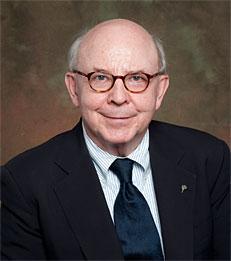Opinion
Where Have All the American Banks Gone?
—


Since Americans throughout the country’s history had distaste for concentrated power of any kind, especially concentrated financial power, it is striking to see how much financial concentration has occurred in recent decades.
By Richard Sylla and Robert E. Wright
In 1789 when George Washington took office as the first US president, the country had three banks, one each in Philadelphia, New York, and Boston. At the peak number in 1922, there were about 30 thousand independent US banks. As recently as 1990, more than 15 thousand banks were insured by the Federal Deposit Insurance Corporation (FDIC). A quarter century later there are about 6 thousand independent banks. Thus, in less than a century, the US has lost four-fifths of its banks.
Contrary to common perceptions of reckless banking, most of America’s defunct banks exited via merger rather than outright failure and bankruptcy. True, that is partly because the FDIC, one of the regulators of almost all US-based banks since the 1930s, often aids failing banks by arranging mergers with stronger institutions. Most merger activity, however, stems from the age-old affinity of American banks for increasing their size and decreasing their competition whenever and however possible. The common perception of the fragility of the US banking system, however, is not entirely wrong: over the course of US history, 23 thousand banks failed, most in gobs associated with the infamous financial panics of the nineteenth century and the even more infamous banking crises of the Great Depression.
The disappearance of so many US banks, mostly by being absorbed into larger institutions, prompted us to write Genealogy of American Finance (2015). The book contains short, illustrated histories of the 50 largest financial holding companies recently operating in the United States, along with their “family trees”, that is, charts showing all the predecessor institutions that were acquired or merged together to form the current behemoths. Often these charts are so large that they do not fit on the large-sized pages of our book, but thanks to modern information technologies, they can be accessed at the website of the Museum of American Finance, which sponsored the project.
Read full article as published in The World Financial Review.
__
Richard Sylla is the Henry Kaufman Professor of the History of Financial Institutions and Markets
Contrary to common perceptions of reckless banking, most of America’s defunct banks exited via merger rather than outright failure and bankruptcy. True, that is partly because the FDIC, one of the regulators of almost all US-based banks since the 1930s, often aids failing banks by arranging mergers with stronger institutions. Most merger activity, however, stems from the age-old affinity of American banks for increasing their size and decreasing their competition whenever and however possible. The common perception of the fragility of the US banking system, however, is not entirely wrong: over the course of US history, 23 thousand banks failed, most in gobs associated with the infamous financial panics of the nineteenth century and the even more infamous banking crises of the Great Depression.
The disappearance of so many US banks, mostly by being absorbed into larger institutions, prompted us to write Genealogy of American Finance (2015). The book contains short, illustrated histories of the 50 largest financial holding companies recently operating in the United States, along with their “family trees”, that is, charts showing all the predecessor institutions that were acquired or merged together to form the current behemoths. Often these charts are so large that they do not fit on the large-sized pages of our book, but thanks to modern information technologies, they can be accessed at the website of the Museum of American Finance, which sponsored the project.
Read full article as published in The World Financial Review.
__
Richard Sylla is the Henry Kaufman Professor of the History of Financial Institutions and Markets
